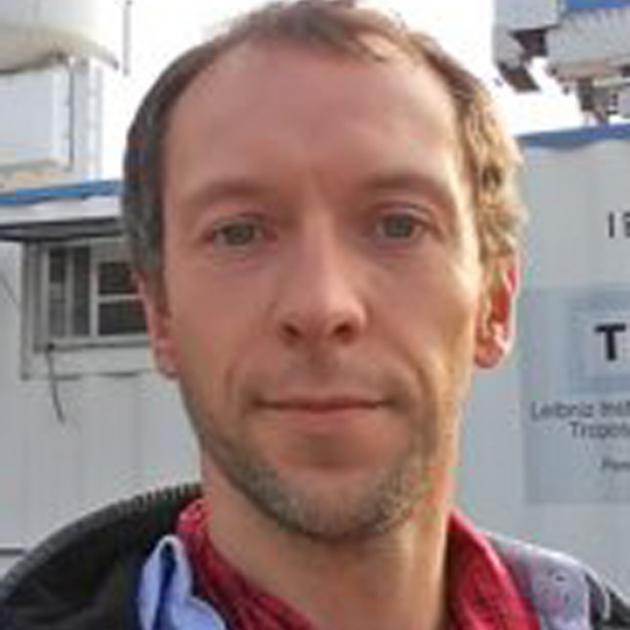Science
Laser Technology Launches New Atmospheric Research in New Zealand

Researchers are set to commence a significant atmospheric study with the launch of a laser system at the MetService site near Invercargill Airport. The project, named goSouth-2, is a collaborative effort involving institutions from Germany and New Zealand, aimed at understanding the role of aerosols in the atmosphere. The research officially opens on September 3, 2023, with five staff members from the Leibniz Institute for Tropospheric Research (TROPOS) currently establishing the necessary equipment.
The primary goal of the goSouth-2 project is to gather data on how different types of aerosols—tiny airborne particles that originate from various natural and human-made sources—affect cloud formation. According to Patric Seifert, a researcher at TROPOS, these particles include salt, dust, pollen, and residues from smoke and volcanic activity. He explained that aerosols are essential for cloud formation as they act as nuclei for cloud particles.
“The less aerosol particles are available, the less cloud particles can form, and vice-versa,” Dr. Seifert noted. The unique geographical location of southern New Zealand, specifically at the northern edge of the Southern Ocean, provides an advantageous setting for this research. The region experiences varying air quality; while air masses from the Antarctic tend to be clean, those from Australia can be significantly more polluted.
Studying the differences in aerosol content between these air masses will offer valuable insights into how clouds respond to variations in aerosol levels. Dr. Seifert highlighted that atmospheric and climate models struggle to accurately simulate clouds over the Southern Ocean compared to the northern hemisphere. He pointed out that the disparity in aerosol levels between the hemispheres might be a contributing factor, as more data is typically collected from the more polluted northern hemisphere.
The choice of Invercargill as the research base was strategic. The area offers essential logistical support for operating equipment and accommodating researchers. MetService has been conducting long-term weather observations at this site, including weather balloon soundings, precipitation tracking, and solar and thermal radiation measurements.
While the data collection instruments are primarily land-based, residents near Invercargill Airport may notice a green laser beam in the sky. This beam is part of the lidar (light detection and ranging) systems used to analyze aerosols. Dr. Seifert confirmed that the laser beam is stationary and that airport personnel have been informed of its presence.
In addition to lidar technology, the research team will employ radar systems to further investigate clouds and precipitation patterns. The TROPOS team plans to remain on-site for 18 months, while a core group of approximately 15 researchers will analyze data back in Germany.
This new initiative follows the completion of the goSouth-1 project in 2022, which was a shorter, month-long study conducted 50 kilometers from Invercargill. The findings from both projects are expected to enhance understanding of atmospheric dynamics in the Southern Hemisphere, contributing to the broader field of climate science.
-

 World4 months ago
World4 months agoTest Your Knowledge: Take the Herald’s Afternoon Quiz Today
-

 Sports4 months ago
Sports4 months agoPM Faces Backlash from Fans During Netball Trophy Ceremony
-

 Lifestyle4 months ago
Lifestyle4 months agoDunedin Designers Win Top Award at Hokonui Fashion Event
-

 Entertainment4 months ago
Entertainment4 months agoExperience the Excitement of ‘Chief of War’ in Oʻahu
-

 Sports4 months ago
Sports4 months agoLiam Lawson Launches New Era for Racing Bulls with Strong Start
-

 World5 months ago
World5 months agoCoalition Forms to Preserve Māori Wards in Hawke’s Bay
-

 Health4 months ago
Health4 months agoWalking Faster Offers Major Health Benefits for Older Adults
-

 Lifestyle4 months ago
Lifestyle4 months agoDisney Fan Reveals Dress Code Tips for Park Visitors
-

 Politics4 months ago
Politics4 months agoScots Rally with Humor and Music to Protest Trump’s Visit
-

 Top Stories5 months ago
Top Stories5 months agoUK and India Finalize Trade Deal to Boost Economic Ties
-

 Health2 months ago
Health2 months agoRadio Host Jay-Jay Feeney’s Partner Secures Visa to Stay in NZ
-

 World5 months ago
World5 months agoHuntly Begins Water Pipe Flushing to Resolve Brown Water Issue









